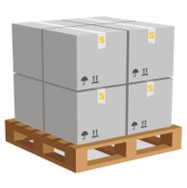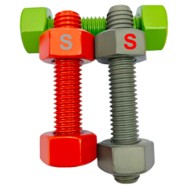
Navigating dress figures might appear as a confidential mystery
- Noting your individual frame starts the sizing journey
- Secure precise bust, waist and hip measurements for confidence
- Consult each label's size guide prior to purchase
Don't depend solely on label sizes since they can deceive Instead, align your body stats with the brand's table. Discovering wardrobe identity is an individual experiment.
Deciphering the puzzle of measurement charts
Fit discrepancies in clothes cause shopper headaches everywhere. Interpreting measurement charts sometimes resembles a tough puzzle, with standards shifting between labels and regions. Using a few strategies you can confidently interpret size tables.
- To start, recognise that US, UK, EU and Asian scales differ. Commonly this covers American, British, European and Japanese sets.
- Move on to examine bust, waistline, hip and length dimensions. Compare the brand's numbers to your body data.
- Finally, check the seller's tips and fit notes to refine your pick. You will usually find advice, alteration suggestions and guidance.
Achieving the best fit in your clothing search
The territory of clothes measurements often confuses shoppers. A single brand's medium may equate to another's small. Discrepancies result from brand-specific scaling systems. Consequently first take careful measurements of your body. Fetch a soft tape to measure bust, waist and hip circumferences. Refrain from trusting a single familiar size number. Within one label, styles may alter how a size performs. Securing a perfect fit often requires trying a range of sizes.

Choosing whether to use default sizes or bespoke fit
For products such as furniture you face a standard or custom choice. Each route comes with advantages and trade-offs. Standard offers convenience and usually lower expense. If you have an unusual space or special requirement custom may suit better
- Think through practical needs and spending limits before choosing
- Measure your space or body with accuracy
- Examine different manufacturers and proposals prior to order
In the end the right dimension relies on your individual case.
Handling size conversions between countries and brands
Crossing between national and brand size systems can feel like a maze. Luckily, charts and calculators simplify cross-system translation. Start by learning the common systems for clothes and shoes. Consult cross-reference charts to bridge different systems. Realise that personal shape plays a role in choosing size. Check reviews and fit reports to confirm expected sizing.
A straightforward approach to understanding sizes
Dealing with apparel charts commonly confuses people. Brands often implement distinct sizing philosophies, yet this resource aims to simplify the process with clear steps.
- Start out by taking precise body readings with a tape
- Subsequently, check your stats against the manufacturer's chart
- Consider your silhouette because form affects fit perception
Ultimately testing actual garments remains the most reliable way to confirm fit.
A full-scale handbook to men’s and women’s size charts
Browsing digitally makes sizing decisions more complicated. Consequently, consult this resource for men's and women's standard measures. For jeans, tops or dresses these notes aid in determining correct size.
- First off, understand that country and brand cause sizing variance
- Also take waist, hips, bust and chest measurements carefully
- Finally, err on the side of the bigger size when uncertain
Employing these guidelines builds confidence in interpreting size tables. Enjoy selecting the perfect fit!

Figuring out kids' sizes: guidance for caregivers
Determining youngsters' sizes often proves tricky. Rapid child growth causes frequent size changes. Rely on the label's measurements instead of suggested ages. Obtain chest, waist and height data to match the size chartMastering body measurements: bust, waist and hips
Securing a flattering fit depends on accurate body numbers. You will need a flexible tape and perhaps a helper to get precise readings. Stand tall but relaxed with feet separated and shoulders soft
How size ranges from XS to XXL translate
The fashion industry's size landscape is often fragmented. Inter-brand differences often prevent uniform sizing standards. Analyzing the spectrum of sizes helps resolve confusion. Now we dive into the real meaning of labels and numbers!
Championing size acceptance

Acceptance of all sizes celebrates human variety and worth. It promotes rejecting constraints that label only one size desirable. We should nurture communities that support body confidence for all.
- Commit daily to encouraging body acceptance and love Select habits that promote acceptance and healthy Standard Size self-view Opt for daily practices that reinforce body love Select habits that promote acceptance and healthy self-view
- Never forget that charm comes in many silhouettes and scales
- Critique visuals and stories that push a single beauty model
- Select habits that promote acceptance and healthy self-view
